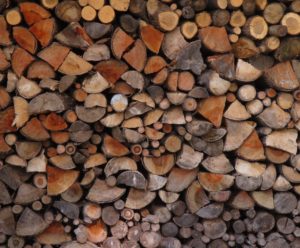 Here are some interesting facts that will help you purchase firewood for your fireplace or stove. If you do it right, you will save money while keeping your family safe and toasty. This is the first post in a series of three that will explain how to properly purchase, season, and store firewood.
Here are some interesting facts that will help you purchase firewood for your fireplace or stove. If you do it right, you will save money while keeping your family safe and toasty. This is the first post in a series of three that will explain how to properly purchase, season, and store firewood.
1) When you buy firewood at a gas station, supermarket, hardware store or big box store, you have no idea how long it’s been aged, if at all. These convenient bundles may be fine for a campfire or beach bonfire but not for your fireplace or stove. Plan ahead.
2) Buying firewood by the bundle is the most expensive way to purchase fuel for your fireplace.
3) The price for firewood varies dramatically from wood supplier to wood supplier and from region to region so shop around.
4) Common woods vary from region to region. As an example, here in Southern California, the most common woods are avocado, eucalyptus, pine and oak. Eucalyptus and avocado have a lot of oil in the wood so they create more creosote buildup in your fireplace or stove flue pipe. Pine, because it’s a soft wood, is great to start a fire. Once a fire is established, throw on the oak, a hard, dense wood that will give you a long-lasting, hot, clean-burning fire. Avocado, eucalyptus and pine will be less costly than oak but oak will give you a longer lasting, cleaner fire.
5) Pinyon pine, another type of wood found in the Southwest United States, as well as wood from fruit trees are also good quality firewood found here in Southern California.
6) Some chimney professionals will tell you to never burn eucalyptus or avocado woods. Both avocado and eucalyptus, because of the high oil content, can produce more creosote buildup than other woods, even if the woods are aged long enough. This creosote buildup makes it even more critical to have your chimney inspected on an annual basis as specified by the National Fire Protection Guidelines.
7) Use a reputable wood supplier. Not only will they be more honest about how long the wood has been aged but also more honest about the quantity of the firewood you purchased. If you suspect that you have been shorted by your local wood supplier, contact your weights and measures office before you use the wood.
8) Never buy or burn firewood that has been treated with stain or paint. This includes construction scraps which is treated wood. The chemicals can be toxic when burned.
9) To save money, buy unseasoned wood. An added benefit is that you’ll know for sure how long the firewood has been aged since you’ll be aging the wood yourself.
10) Buy firewood from local sources! Bringing wood from one region to another increases chances of transporting insects from their origin. Invasive species of insects can devastate the local forests where there are no natural predators or defenses to stop them. In some states, regulations and quarantines have been instituted to restrict the movement of firewood.
Be sure to have your chimney inspected before using your fireplace. It is critical to have your chimney inspected on an annual basis as specified by the National Fire Protection Guidelines which say, “Chimneys should be inspected on an annual basis and swept if necessary.” To find a qualified CSIA Certified Chimney Sweep, make sure to go through the Chimney Safety Institute of America.

My husband and I have a fireplace, and we would love to buy some wood so we can use it this winter. Thank you for all the tips about how to purchase firewood. I’m glad you mentioned, we shouldn’t buy or burn firewood that has been treated with stains or paints. I had no idea those were harmful to you.